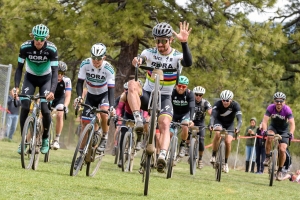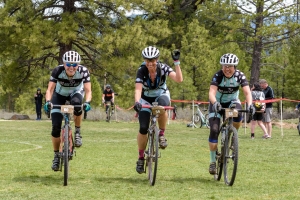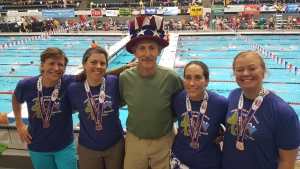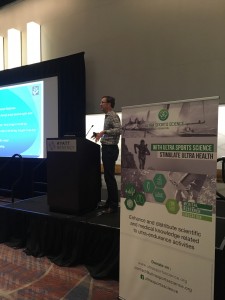New Pro Tate Meintjes Rides the Carson Epic
Silver Sage Sports and Fitness Lab is proud to sponsor pro mountain biker Tate Meintjes. He grew up with the Reno Development Cycling Team and is now studying mechanical engineering at UNR. He rides for the Bear Pro Team powered by Trek. Check out this blog post by Tate about his first experience racing the Carson Epic in the pro field. 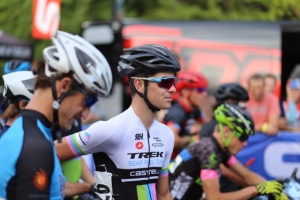
For those of you that haven’t heard about the Carson City Epic. Let’s just say it lives up to its name: epic. The Carson City Epic is part of a four-race series known as the Epic Rides series and boasts some of the best experiences you can have during a weekend. The organizers have done an amazing job making the event fun, inclusive, and spectator friendly. The main event in the Carson City Epic is the backcountry race. People have the option of choosing to do races that are fifteen, thirty-five, or fifty miles long and are taken through amazing trails with great views in the highlands of Lake Tahoe. The backcountry races are the only competition that the amateur racers get to take part in but racing professionally, I had the chance to race a Fat Tire Criterium (or crit) on Friday and the Capital 50 backcountry race on Sunday.
The Fat Tire Crit is the biggest attraction for spectators as they had the ability to watch the Pros race through downtown Carson City. The Fat Tire Crit is raced on mountain bikes and the only difference allowed during the crit from the backcountry race is tire choice. So, a bunch of professional mountain bikers, myself included, mounted slicks on their mountain bikes and got ready to race some road.
The crit started with two gunshots that echoed off the government buildings in downtown Carson City. I expected the race to be like short track with everyone going as hard as they could for that twenty-five minutes of racing, but I was wrong, and I am happy about that. The race started pretty slow and not many people were pushing at the front, so it was a good time to move up and try my hand racing with the fastest mountain bikers in the nation. It was one of the most fun experiences I have had on the bike. There were two Olympians, many national champions, and many other racers like me who were young and just joining the professional field.
The criterium zoomed through downtown and the course was lined with spectators going crazy as the field of sixty-five riders cut the corners to get every inch of advantage possible. The racing was fast, and I was able to stay at the front for most of the race. Then the marker came out telling us there were three laps to go. Everyone went full ballistic missile and it was taking everything I had not to get dropped. After every criterium I’ve ever done I’ve come to the finish and thought to myself, “I really shouldn’t have done that much work up front so early on.” But it was an amazing experience zooming through the streets of Carson City with the crowd roaring the entire time. Once the crit finished it was time to prepare for the real race of the weekend. The Capital 50 backcountry.
Once again, the organizers put together an amazing event. The course went from downtown Carson, over Ash to Kings Connector, up to Spooner Lake, over to Marlette Lake and the Flume Trail, up the Tahoe Rim Trail to Marlette Peak, and then back down to Carson City. The course contained some of the best single-track on earth, breathtaking views, and over 6500 feet of climbing.
This was my first ever serious marathon mountain bike race, and so I didn’t have the best idea of how to race it. However, I put my head down and did what made sense for my style of riding. With such a long race you need to find recovery anytime you can, eat a lot, and drink more then you think you need. I started the race focused on having the best race I could while staying hydrated and eating plenty.
There was a neutral roll out of downtown at 8:30AM, and it was hailing on us. It did not look good for the rest of the day, but luckily the weather cleared out right as we hit the dirt. As soon as we hit the first climb, I had to let the leaders ride away. I followed a chase group of about six guys, and we all worked together until Spooner Lake. I tested them all a few times on the climb up by launching a small acceleration here and there but it didn’t work, and it tired me out. I had to drop off again. Trying to keep my spirits up I rode by myself for a bit and recovered from the climb until two riders caught up with me. I paced them on the Flume trail which meant there was very little time to look at the views. They were making me work to keep up on the flat but I knew there was a lot of climbing still to be done. Luckily, I stayed with the two guys and followed one of them up the climb to Marlette Peak.
On that climb, I knew that I had made a good decision to save some energy. My small group was starting to catch riders. After reaching the high point of the race, I was hurting but felt as though I could push. I sprinted out of every corner on the downhill and caught two of the people I was riding with earlier. We worked together on a flat road section, but once the single track came up on us it was time to race again. It was chaos. One guy flatted, another guy and I shoulder checked the same tree, and we were going hard. On the last real climb, I pushed, and got a little gap to keep on the downhill, but the race wasn’t done. There were three more riders just ahead of me that I recognized from the beginning of the race. They pushed, I pushed, I closed a little bit of the gap, but it wasn’t enough and they finished just thirty seconds ahead. At the end of the race I was tired, my muscles were cramping, and I had a huge smile on my face.
I would recommend the Epic Rides series to anyone. It has competitions and fun rides that fit everyone and the atm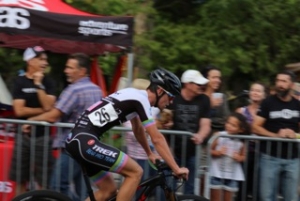 osphere around the venue is genuine and enjoyable. As I said, this was my first marathon mountain bike race, but thanks to the great organizers of Epic Rides, it won’t be my last!
osphere around the venue is genuine and enjoyable. As I said, this was my first marathon mountain bike race, but thanks to the great organizers of Epic Rides, it won’t be my last!
Tate finished 31st out of a field of 52 in the crit and 32nd out of 51 in the backcountry race. Congratulations Tate!

